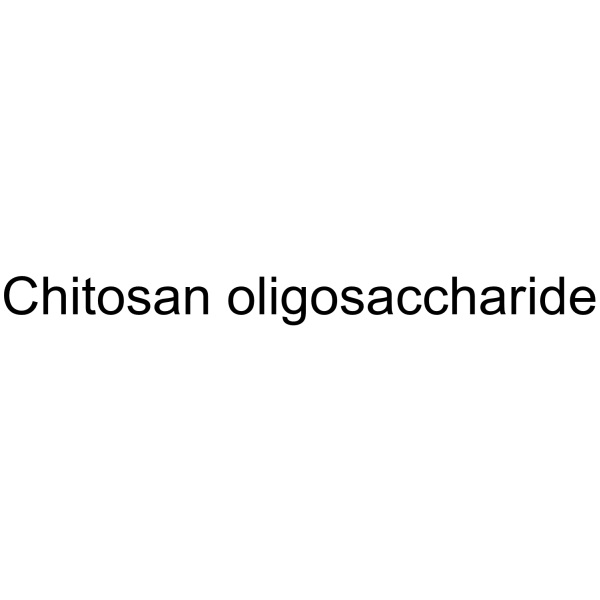Shopping Cart
- Remove All
 Your shopping cart is currently empty
Your shopping cart is currently empty

Chitosan oligosaccharide (COS) is an oligomer of β-(1→4)-linked D-glucosamine that activates AMPK while inhibiting inflammatory signaling pathways, including NF-κB and MAPK.

| Pack Size | Price | Availability | Quantity |
|---|---|---|---|
| 1 g | $48 | In Stock |
| Description | Chitosan oligosaccharide (COS) is an oligomer of β-(1→4)-linked D-glucosamine that activates AMPK while inhibiting inflammatory signaling pathways, including NF-κB and MAPK. |
| In vitro | Activation of AMPK and inhibition of inflammatory signaling pathways including NF-κB and MAPK pathways are recognized as major mechanisms responsible for several effects of Chitosan oligosaccharide (COS) including anti-inflammation, anti-cancer, and anti-diabetes. COS can interrupt cancer progression at multiple stages by modulating several signaling proteins/pathways including AMPK, NF-κB, mTOR, CD147, caspase-3, MMP-2, MMP-9, and VEGF. In vitro experiments have demonstrated that Chitosan oligosaccharide induced the death of several cancer cell types including ascites, bladder cancer, prostate cancer, lung cancer, liver cancer, leukemia, cervical cancer, and colorectal cancer. The values of IC50 of Chitosan oligosaccharide in inducing cytotoxicity are 25 μg/mL-50 μg/mL depending on types of cancer cells [1]. |
| In vivo | Administering Chitosan oligosaccharide orally at a dose of 16 mg/kg/day effectively reduces the production of proinflammatory cytokines (IL-4, IL-13, and TNF-α) associated with allergic reactions in both lung tissue and the bronchoalveolar lavage fluid of mice. Additionally, this compound demonstrates an anti-inflammatory effect on lymphocyte activation in a rat model of autoimmune anterior uveitis, which is induced by immunization with bovine melanin-associated antigen [1]. Moreover, Chitosan oligosaccharide has shown to mitigate the effects of UV-induced damage in mouse skin, evident by preventing skin erythema, dryness, thickening, sagging, coarse wrinkles, and even the development of leathery appearance and slight flesh-colored lesions caused by 10 weeks of UV exposure. This contrasts significantly with the smoother, less wrinkled skin observed in the control group of hairless mice, as quantitatively supported by a significantly higher visual score in the model group (p<0.05) [2]. |
| Alias | COS |
| Cas No. | 148411-57-8 |
| Relative Density. | no data available |
| Storage | Powder: -20°C for 3 years | In solvent: -80°C for 1 year | Shipping with blue ice. |
| Solubility Information | H2O: 50 mg/mL, Sonication is recommended. DMSO: 50 mg/mL (146.92 mM), Sonication is recommended. |

Copyright © 2015-2025 TargetMol Chemicals Inc. All Rights Reserved.